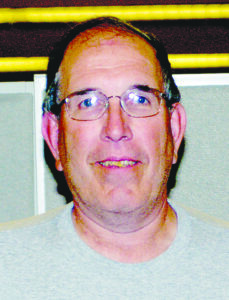After a long absence, a return to the fair

Doug Pugh
I went to the fair to compare it with those of yesterday.
Though we currently reside in a Twirl-a-Whirl existence, the fair is still worth a ride. It has been steadfast in its adherence to tradition with only one exception.
An exception I’ll address later in this piece.
Oh, there have been changes. The rides are newer, more substantial, and better constructed. Dalton Kennedy, third-generation owner of the fair company that was here this year, told me their rides are now hydraulically operated as opposed to the old mechanically driven systems.
Though the rides make less noise, they look even more exciting, but I can only report what they look like; riding, for me, shall remain a memory.
However, I was able to observe new ride memories being born — the screams and smiles of young people being taken to and beyond the comfort zone of their gravitational stability.
The folks who run the booths, who provide us with those opportunities to win stuffed animals by throwing darts, shooting basketballs, or airguns, weren’t here this year. Not because they no longer exist as fair midway components, but rather, health issues precluded their attendance. They’ll be back next year.
The rides cost more, but that should be no surprise. Like everything else, fair expenses have increased. Dalton told me that raising the price to ride their version of a Twirl-a-Whirl was, just as it is with us, beyond his control.
He has to be more efficient.
The old rides required several men and many hours to assemble and disassemble, a process now accomplished with fewer people in less time. The problem now is finding people.
Prospective workers used to be waiting for the fair’s arrival, but no longer. Approximately three-quarters of Dalton’s employees are from Guatemala, working here on seasonal visas. Without Guatemalans, there would be no fair midway in Alpena.
But it never was just about the rides, was it? There was that intangible, additional something that drew us to the fair. Is it still there?
When my sons were young, we would visit the fair and take our camper trailer, parking it by the buildings that housed the animals kids had raised.
My son, Jonathan, remembers being in the camper’s loft, peering out the small window where he slept, seeing the colored lights, and hearing the voices and screams of excitement that floated across the distance to his imagination, producing restful dreams.
Although long ago surpassed in Jonathan’s experiences, those dream-producing illuminations linger with young people, even to the point of surviving competition from cell phones and streamed manifestations.
I know, I saw dreams in young people’s eyes.
So what’s the significant exception?
“Diane.”
Diane was either a hermaphrodite or suffered from ovotesticular syndrome. In either case, an individual who has both ovarian and testicular tissue, both male and female sexual parts.
This condition can occur abnormally, as it did with “Diane,” or normally, as in 95% of the world’s flowers.
I don’t recall what it cost to see “Diane” – probably less than a Ferris wheel ride today. At that point in summer, I had just entered my teens and was doubtless drawn to the promise of a unique story to tell my buddies.
I wasn’t disappointed: there they were, together both!
I must have been among the earliest viewers, for it didn’t take long for Sheriff John Faber to be summoned, submit to the political pressures of the time, and close Diane’s exhibition.
But before the sheriff arrived, I had learned a thing or two.
There was nothing about “Diane’s” revelation that engendered sexual stimulation, only a fascination with what was displayed. What followed was a feeling of empathy for an individual forced to make their living revealing their abnormalities. I felt sorry for “Diane.”
Today, the term hermaphrodite is no longer favored. Those among us who possess both male and female physical facets would be included in the definition of intersex.
Intersex involves natural variations in sexual characteristics that do not fit the typical binary definitions of male and female. They include variations in genitals, chromosomal combinations, and levels of the hormones estrogen, progesterone, and testosterone.
Wikipedia describes these conditions in several articles, including “Disorders of sex development.” It is estimated that such conditions appear in as many as 2% of all human births.
Sec. 2(a) of a recently issued presidential executive order defines sex as follows: “‘Sex’ shall refer to an individual’s immutable sexual classification as either male or female.”
But I have known that sex classifications of male or female are mutable since I was 13 years old.
It’s an error that goes beyond a presidential pronouncement. Some Christian denominations make the same assertion in their statements of faith, alleging that the distinct sexual manifestations of male and female reflect God’s image, a rejection of which constitutes God’s rejection.
“Diane”, if passed, may, therefore, have been denied entrance to heaven or limited to a separate heavenly location similar to the one many people in the Civil War South believed back people were consigned to.
But a separate intersex heaven might not be so bad — the vast majority of flowers are there, and there wouldn’t be a big kerfuffle every time someone had to use the bathroom.
Doug Pugh’s column, “Vignettes,” appears monthly on the first Saturday of the month. Pugh was the probate judge of Alpena County for 24 years. Reach him at pughda@gmail.com.





